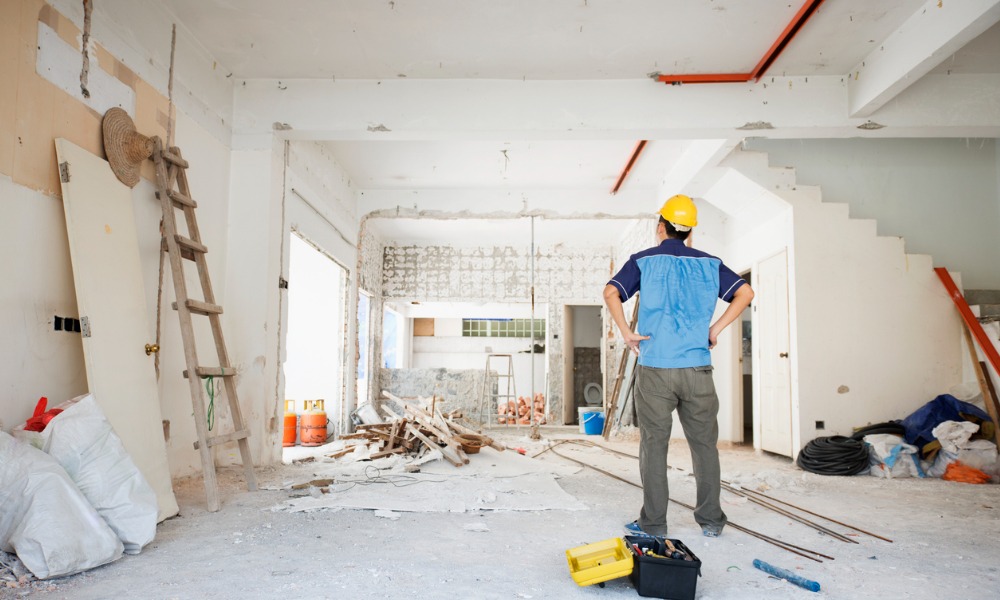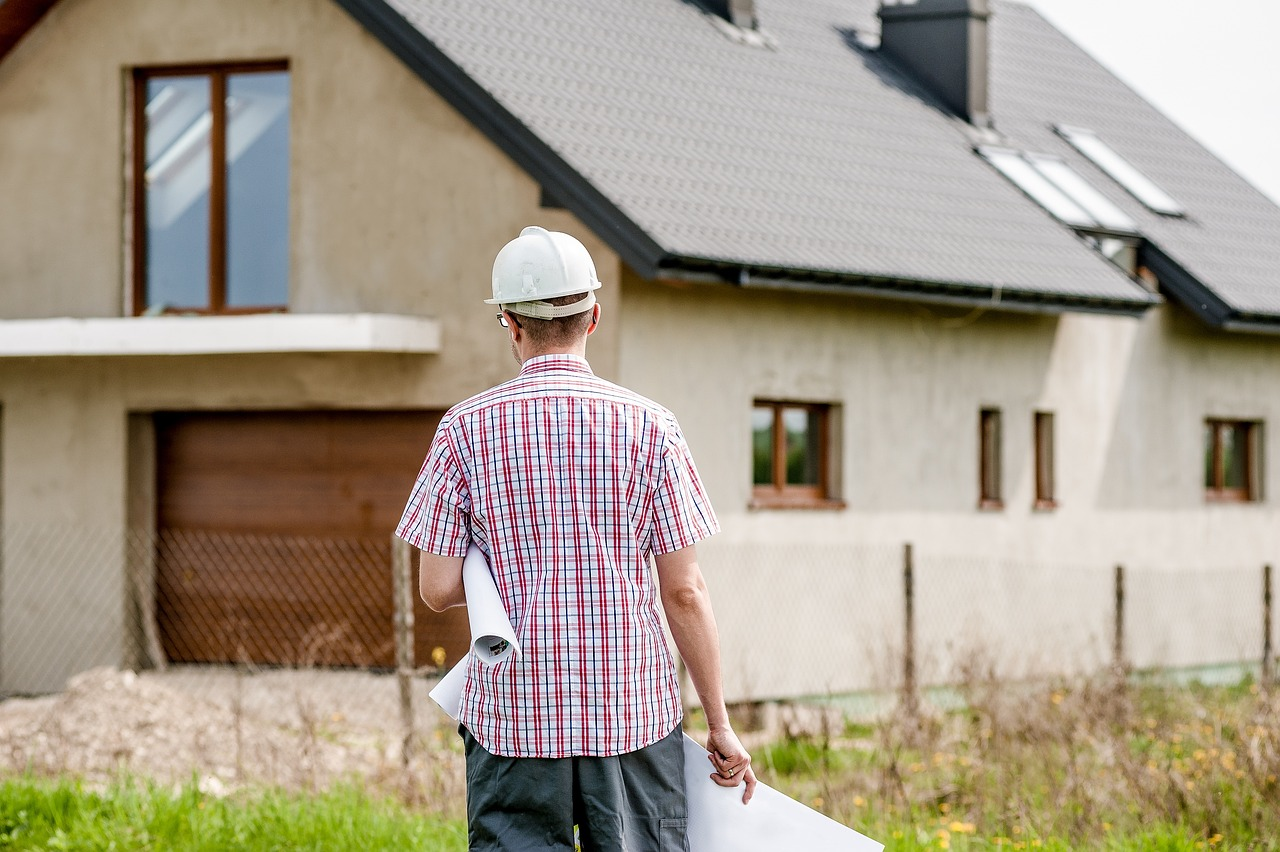Renovating your home can be expensive. Knowing the type of home improvement loans available is the first step in starting your house renovation project

Updated May 23, 2024
In the United States, home renovation is common for property owners. Some do this for the usual housing repairs, others simply want to see parts of their home improve. There are also Americans who want to increase their property’s value through renovating their houses.
Whatever the reason, home improvement projects can be expensive. In turn, financing them may require you to take out a loan. Fortunately, banks and non-bank lenders offer different types of home improvement loans to help meet your financial needs.
In this article, we will discuss the different types of home improvement loans in the US. If you are a mortgage professional, you can share this with your clients, especially those who are planning to renovate their homes.
Types of home improvement loans in the US
The most common types of home improvement loans in the US are:
- home equity loans
- home equity lines of credit
- personal loans
- cash-out refinancing
- FHA 203(k) rehab loans
All these loans can give you the financing that you need. However, it is important to know which type of home improvement loan will best serve your needs. Let’s discuss them further below:
1. Home equity loans
Home equity loans or HELs use the equity in your property and you receive it in lump sum. For this type of home improvement loan, the mortgage company will use your house as collateral. This means a lender can legally take possession of your house if you default on your loan.
Equity refers to the portion of your home that you own based on its market value, less the amount of any liens attached to it. For instance, you have $100,000 in equity if your home value is $400,000 and your remaining mortgage balance is $300,000. As you make more monthly payments, your equity will increase until you own the property completely.
Homeowners can borrow up to 85% of their home equity on average, though some lenders will allow up to 100%. For example, if you have $100,000 in equity, you can apply for a HEL of around $80,000 to $100,000 but not any higher.
Pros of home equity loans
- fixed rates are lower than other home improvement loans
- longer loan terms that can last between five and 30 years
- suited for funding big projects like remodels
Cons of home equity loans
- additional closing costs charged by most lenders and credit unions
- second monthly repayment must be made if you still owe part of the original mortgage
Watch this video to know more about home equity loans:
2. Home equity lines of credit
Home equity lines of credit or HELOCs are another type of home improvement loan. They function like a credit card, but also mostly the same as a HEL. Borrowers can get a pre-approved limit from a lender. Once you pay it back, you can borrow from it again.
Like HELs, HELOCs are secured against your home equity. Most lenders will require you to have at least 20 percent equity in your home to qualify, and you can borrow up to 85 percent of your equity.
The biggest difference between HELs and HELOCs is that you don’t receive a lump sum with the latter. Instead, you can borrow from it up to the credit limit to finance your home improvement expenses.
Interest will increase based only on your outstanding balance, not the maximum limit. In other words, you are not borrowing or paying for money that you don’t need yet.
Pros of HELOCs
- borrowers access funds on an as-needed basis
- has fixed loan term that lasts between five and 20 years, on average
- minimal closing costs and origination fees
Cons of HELOCs
- underwriting process is longer than HELs and simple personal loans
- interest rates are adjustable and usually higher than HELs
3. Personal loans
The third type of home improvement loan is personal loans. If you don’t have enough equity in your property, you can consider getting this loan to finance home improvements. You can apply with most retail and private lenders and qualify without using your home as collateral, as long as you have a good credit history.
A personal loan is an unsecured loan, meaning you do not have to use your house as collateral. You can also obtain a personal loan much faster than HELs or HELOCs, but the repayment term is also much shorter at just two to five years. Closing fees are typically higher as well.
These loan terms might sound unfavorable, but personal loans are more accessible than most other loan types on this list. They are suitable for funding emergency repairs like a damaged heating system or broken water pipes.
Pros of personal loans
- fast application process and possible same-day funding
- suitable for emergency home repairs
- house will not be used as collateral
Cons of personal loans
- higher interest rates and shorter repayment term
- interest rates heavily rely on credit history
- steep late fees and prepayment penalties for some lenders

A homeowner planning to renovate his house
4. Cash-out refinancing
This type of mortgage refinancing taps into the equity you’ve built in your home. In a nutshell, you must replace your original mortgage with a bigger one to receive cash.
For example, let’s say you’ve already built $100,000 in equity but still owe $200,000 from your mortgage lender. If you want to make renovations worth $30,000, you can get a cash-out refinance to pull that amount.
When finalized, the equity in your home will be lower at $70,000 while your new mortgage will have an outstanding balance of $230,000.
Refinancing may also be a good opportunity to get a lower mortgage rate if you bought your house when interest rates were higher.
Pros of cash-out financing
- can be used for debt consolidation
- interest rates are lower than HELs and HELOCs
Cons of cash-out financing
- mortgage insurance needs to be paid if the new loan exceeds 80 percent of your home’s value
- longer period for paying off your mortgage
5. FHA 203(k) rehab loan
Like cash-out refinancing, FHA 203(k) bundles your home improvement costs and mortgage into one loan.
As a loan product backed by the US Federal Housing Administration (FHA), it allows low- to moderate-income borrowers to purchase homes that are in need of repairs. Essentially, you will rehabilitate an existing property and it will become your primary residence.
You don’t have to be a first-time homebuyer to qualify for this government-insured loan. Your down payment can be as low as 3.5%, and you may qualify with a credit score of at least 500.
The FHA is the insurer, not the lender. You must find an FHA-approved lender to start your application.
Not all home improvements and major structural repairs are eligible for the loan. All renovations must also be completed by a licensed contractor, subject to approval by an FHA appraiser or a consultant from the Department of Housing and Urban Development (HUD).
In this article, find out what a cash-out refinance FHA is and how it works.
Pros of FHA 203(k) rehab loans
- low down payment and credit score requirement
- lower closing costs than other home improvement loans
Cons of FHA 203(k) rehab loans
- payment of mortgage insurance upfront and on a monthly basis
- intended only for fixer-upper homes and older properties
- not for DIY home renovations
What is the minimum credit score for a home improvement loan?
Typically, the minimum credit score for a home improvement loan is at least 620. However, there are lenders that cater to borrowers with bad credit scores.
A credit score of 300 is the lowest possible score that a borrower can have to be able to qualify.
What is the average length of a home improvement loan?
It depends on what type of home improvement loan you are applying for. Some loans can last between 2 to 12 years. Others can have a longer period of 15 to 30 years.
The best type of home improvement loan for you
For home repair emergencies, getting a personal loan is a viable option because of its fast application and approval process. You should carefully weigh the benefits against a potentially high interest rate.
If you don’t need the funds immediately, you might consider getting an HEL or HELOC. Interest rates are generally lower, but that amount you’ll get might not be much if you haven’t built much equity.
Getting a cash-out refinance is another option that taps into your home equity. Under this set up, you're exchanging your current mortgage for a bigger one, so loan terms and interest rates may be different.
If you’re looking to buy a home and renovate it at the same time, an FHA 203(k) rehab loan may work for you. Its eligibility requirements are lenient, but FHA rules limit the use of money for specific home improvement projects only.
Ultimately, the best type of home improvement loan is the one that's suited to your financial capacity and home renovation needs.
Which type of home improvement loan would work best for your renovation project? Share your story in the comments.



